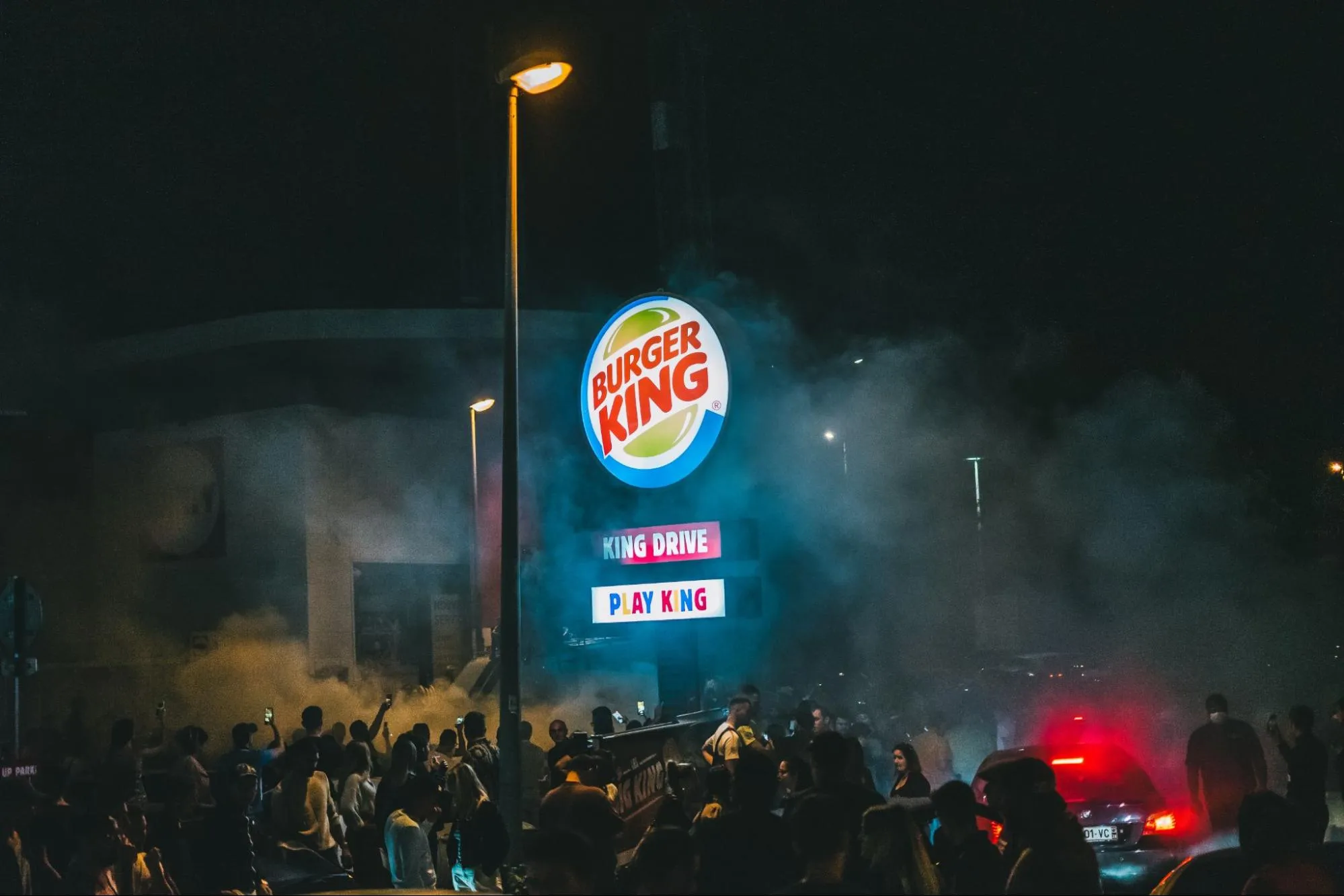What is the Biggest Marketing Disaster Ever?
From Snapchat’s “Would You Rather” question to Fiat’s anonymous love letters to women, here are 10 answers to the question, “What is the biggest marketing disaster in history?”
- Snapchat’s “Would You Rather” Question
- Coca-Cola’s “New Coke”
- Sega Saturn’s Announcement
- Burger King’s Women’s Day Tweet
- Hoover’s Free Flights
- Fyre Festival
- Bic South Africa’s “Think Like a Man” Campaign
- Starbucks’ Green Marketing Turned into Green Washing
- Adidas and the Boston Marathon
- Fiat Mails Anonymous Love Letters to Women
Snapchat’s “Would You Rather” Question
It’s hard to talk about marketing disasters without mentioning the famous story of Snapchat and its take on the classic “Would You Rather” game. The ad that appeared on the app made light of the domestic violence case between Rihanna and Chris Brown, asking users who they would prefer to punch. What followed was an easy-to-predict massive drop in market value and a major PR disaster from which the company never recovered.
 Natalia Brzezinska
Natalia Brzezinska
Marketing and Outreach Manager, PhotoAiD
Coca-Cola’s “New Coke”
One of the biggest marketing disasters in history is the launch of “New Coke” in 1985 by Coca-Cola. The company changed the formula of its popular soda, which led to a massive public backlash. Customers were outraged, and many boycotted the new product.
Within three months, Coca-Cola reintroduced its original formula as “Coca-Cola Classic” due to the negative response. This event highlighted the importance of brand loyalty and the dangers of making major changes to a successful product without first testing it with customers.
 Gregg Dean
Gregg Dean
Co-founder and CEO, Layla Sleep
Sega Saturn’s Announcement
This probably tops the worst marketing in the video game industry. Sega of America at E3 in the mid-90s was coming off a very successful period with the Sega Genesis that surprisingly was competing against the powerhouse that was Nintendo. But then Sega decided to put on the market a bunch of add-ons for the Genesis which didn’t always make sense.
It came to a disaster at E3 when Sega announced the Sega Saturn during a 20-minute press conference, letting people know that it was available that day at retailers for the price of $399. None of the retailers knew they were launching the product that day and refused to work with Sega in the future, burning all bridges.
What’s worse is that Sony was up after Sega for their press conference. After a 20-minute stuffy presentation from Sega, Sony’s press walked to the podium and simply stated: “$299” for their new console, the “PlayStation,” before walking off stage to round applause, putting the final nail in the coffin for Sega.
 Seth Newman
Seth Newman
Director, SportingSmiles
Burger King’s Women’s Day Tweet
Burger King’s Women’s Day tweet in 2021 was arguably one of the biggest marketing disasters in history. Burger King’s tweet courted controversy when it posted an image that said, “Women belong in the kitchen”. The tweet quickly sparked outrage as many people found it insensitive and offensive. Burger King later apologized for their mishandling of the situation, which further drew attention to it.
Burger King’s Women’s Day tweet was met with a great deal of criticism and caused significant damage to their reputation. Burger King later vowed to support female empowerment and change the workplace to encourage gender equality. Despite Burger King’s efforts to redeem itself, the mistake is still remembered as one of the biggest marketing blunders in history.
 Kate Wojewoda-Celinska
Kate Wojewoda-Celinska
Marketing Manager, Spacelift
Hoover’s Free Flights
One of the biggest marketing disasters in history was Hoover’s free flights promotion in the 1990s. To drum up sales during a recession, the U.S. branch of Hoover offered free flights to the U.S. for purchasing a minimum of $100 of product. However, they underestimated the response to the campaign and soon found themselves with applications for millions of dollars of tickets.
They tried to cancel the promotion or stall by making the approval process purposely inefficient and frustrating, however, they landed in legal trouble and sparked outrage from customers. The stunt permanently damaged the company’s finances, reputation, and consumer trust.
 Michael Alexis
Michael Alexis
CEO, tiny campfire
Fyre Festival
The Fyre Festival of 2017 was promoted by models, influencers, and musicians as a luxurious experience on a private Bahamian island, but when attendees arrived, they were met with a reality that was far from luxurious. Instead of private villas, they were given FEMA tents, and instead of gourmet meals, they received cheese sandwiches.
After just one day, the festival was abruptly canceled, leaving attendees stranded without transportation and refunds. The festival’s failure serves as a cautionary tale for the events industry, highlighting the importance of honesty and transparency in marketing campaigns and the consequences of failing to meet customer expectations.
 Burak Özdemir
Burak Özdemir
Founder, Online Alarm Kur
Bic South Africa’s “Think Like a Man” Campaign
Bic South Africa’s Women’s Day campaign in 2015 is widely regarded as one of the biggest marketing disasters of all time. The slogan, “Look like a girl, act like a lady, think like a man, work like a boss,” was criticized as sexist and degrading towards women.
The backlash was immediate and intense, with many customers expressing their outrage on social media and other platforms. Bic South Africa issued an apology and retracted the campaign, but the damage was already done. The controversy generated widespread media coverage, turning the campaign into a cautionary tale for companies seeking to avoid marketing missteps.
 Dilruba Erkan
Dilruba Erkan
Consultant, Character Calculator
Starbucks’ Green Marketing Turned into Green Washing
According to The Economist, only 9% of the world’s plastic is recycled. While the fight for sustainability has been ongoing, some companies, even big ones, have not been true to their claims.
One of the best examples of green marketing that turned into greenwashing was when Starbucks produced what they claimed to be a ‘more sustainable’ strawless lid.
This strawless lid aimed to reduce carbon footprint, but the problem is, it was later revealed that the new lid contained more plastic.
According to Starbucks, the new lid was made of a recyclable material known as polypropylene, but given the percentage of plastics recycled all over the world, the product does more harm than good. Plastics are more likely to be sent to landfills than recycled.
 Becky Moore
Becky Moore
Founder, Global Grasshopper
Adidas and the Boston Marathon
Adidas and the Boston Marathon are widely regarded as the biggest marketing disaster in history. This is because Adidas’s marketing campaign in anticipation of the marathon was highly insensitive and offensive. The campaign involved emailing and congratulating all participants for “surviving” the marathon. It was seen as a reference to the 2013 Boston Marathon bombing that killed three people and injured hundreds more.
This email caused outrage and backlash from participants and the wider public, severely damaging Adidas’ brand reputation. The insensitivity of the campaign was seen as inexcusable, especially considering the tragic events that had occurred just a few years prior. The fallout from the campaign serves as a lesson for all brands on the importance of being sensitive in their marketing efforts.
 Peter Reagan
Peter Reagan
Financial Market Strategist, Birch Gold Group
Fiat Mails Anonymous Love Letters to Women
Fiat launched an advertisement campaign targeting females in Spain in 1994. It was quite an original marketing campaign since it did not use billboards, radios, or newspapers but rather anonymous pink love letters sent to 50,000 young women.
The letter was along the lines of, “We met on the street and I noticed how you interestedly glanced in my direction…” In six days, they intended to send another letter revealing the admirer was in fact Fiat. They wanted to evoke romance and intrigue, but instead, they brought out paranoia and fear. Women thought they were being stalked. Private investigations arose. If this wasn’t a disaster enough, in 2016, Fiat released a handbook in addition to an operating manual that was outrightly sexist. It read, “If a lady’s skirt is too short, we recommend that she travels in the back seat to keep our concentration…”
While hilarious in retrospect, marketing campaigns should seriously consider the broader social impact of the narratives they prop.
 Marco Genaro Palma
Marco Genaro Palma
Co-founder, TechNews180
Submit Your Answer
Would you like to submit an alternate answer to the question, “What is the biggest marketing disaster in history?”
